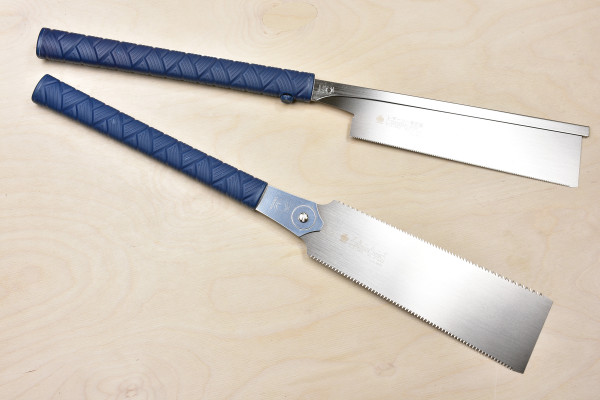In order to function correctly, the teeth of a handsaw must be fractionally wider than the plate, this is achieved by introducing set; bending the teeth alternately left and right using a pair of saw setting pliers. Over repeated sharpenings the set gets filed away and must periodically be reintroduced to prevent the saw from binding.
Place the saw set over the blade and align the hammer with the first tooth. Gently squeeze the handles together to advance the hammer and bend the tooth over onto the anvil. Repeat for alternate teeth, then reverse the saw and set the alternate teeth the other way.
When all the teeth are done, a very (very) light stroke with a diamond stone down each side from heel to toe will ensure that the teeth are uniformly set. If the saw tends to veer in one direction the chances are that the teeth are not quite evenly set left and right, give the saw teeth on the side that it is veering towards another light kiss with the diamond stone and make another test cut.
When you can make a series of perfectly parallel, perfectly vertical cuts about a mm apart, the saw has been set correctly. Consistent repeated variance from plumb and true indicate a problem with the set of the teeth, random variances are caused by incorrect body position when sawing.
For the finest saws (12tpi+) it may be necessary to file small chamfers on the face of the hammer to bring it within the width of a single tooth.











